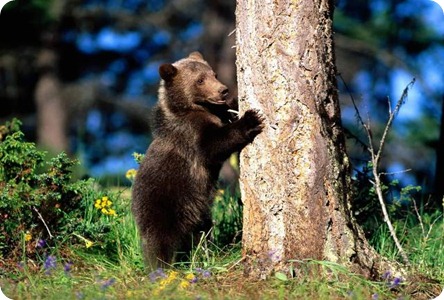- Way of life
The bear’s favorite areas offer plentiful food, secure shelter and comfortable wintering spots. Thick beech and oak forests, in combination with rock faces offering good dens, boast the highest density of the country’s bear population.
A bear needs about 10-15 kilos of food every day, so the size of its range depends on the availability of food and the presence of other bears in the vicinity. In food-rich forests, a bear roams some 50 to 100 km², while in poor areas it would need to cover 10 times as much ground to subsist. Females have more limited ranges, because they cannot stray far from the lair when they have cubs.
In the wild, a bear rarely lives for more than 25-30 years before disease, other predators or humans catch up with it.
Bears are active both in daytime and at night. Human interference and persecution have forced the bears in Bulgaria into a more secluded, nocturnal existence, hiding during the day and roaming after dark.
| Video: |
| Photo Gallery: |







































